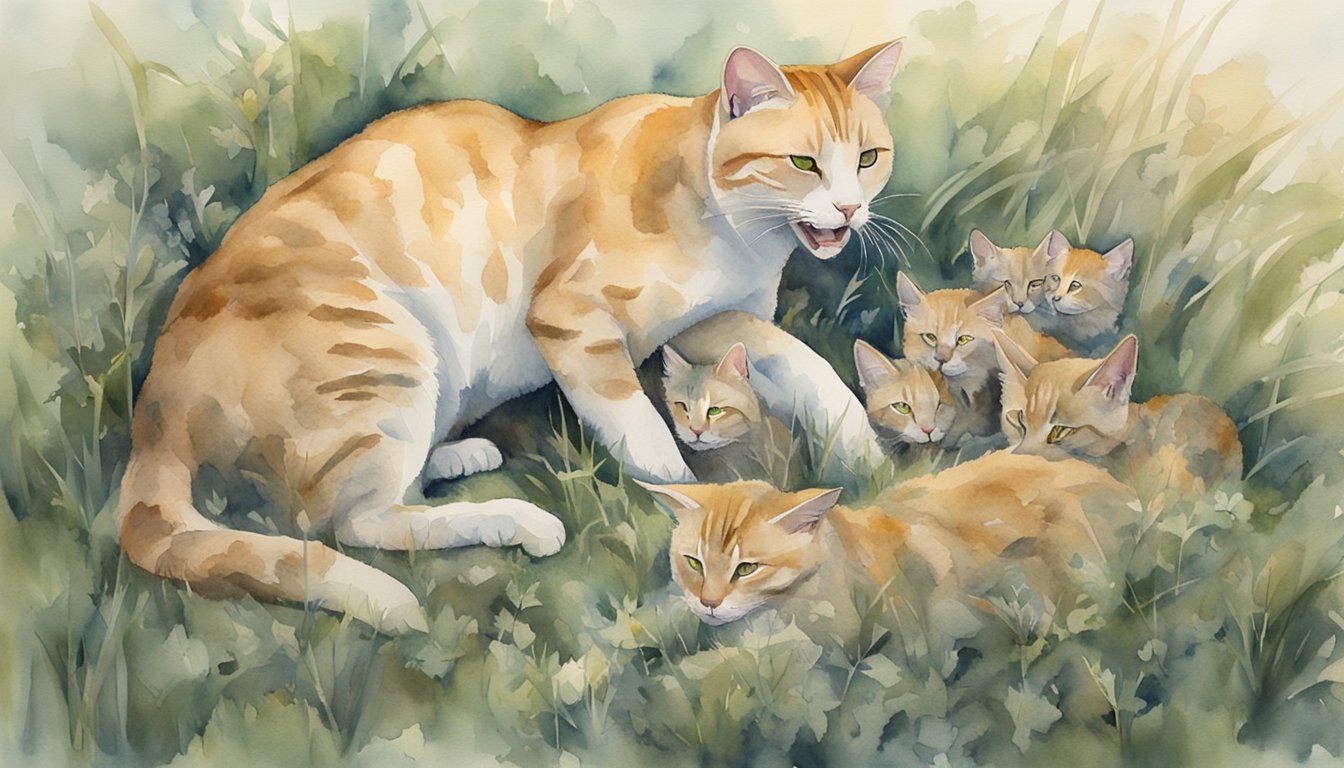Impacts of Feline Predation

Cats, both domestic and feral, play a significant role as predators with profound effects on wildlife populations and biodiversity. Their hunting success spans across various species, significantly impacting the conservation efforts for native fauna, especially in areas where cats roam freely.
Effect on Wildlife and Biodiversity
Feline predators contribute to wildlife predation, exerting pressure on native species, often leading to decreased populations and even contributing to mammal extinctions. Feral cats, in particular, pose a threat to the survival of native birds, small mammals, and reptiles, as their hunting instincts and abilities make them efficient hunters. Research indicates that free-ranging domestic cats kill between 1.3-4.0 billion birds and 6.3-22.3 billion mammals annually in the United States alone. The issue of cats as predators is so significant that it has been pointed out as a factor in the extinction of native species in various regions, including Australia, where the predation by feral cats is a severe conservation concern for Australian wildlife, including threatened species.
Domestic vs. Feral Cat Dynamics
The dynamics between domestic cats, stray cats, and feral cats significantly differ. While pets may be provided food at home, many still partake in killing wildlife due to their natural hunting instincts. On the other hand, feral cats are not dependent on humans for food and their survival often relies on their ability to hunt, leading to a higher predation rate on local wildlife. Population control of domestic and feral cats is a vital part of animal welfare and conservation efforts, as unmanaged cat populations can wreak havoc on ecosystems, outcompeting native predators and overwhelming native animals. Organizations like the RSPCA highlight the importance of responsible pet ownership, including keeping cats indoors or contained in safe enclosures to reduce the cat problem and its subsequent impact on local ecosystems.
Management and Conservation Strategies

Effective management and conservation strategies are vital in mitigating the impact of feral cats on wildlife. These measures range from legislation to hands-on conservation programs, designed to protect endangered species and maintain ecological balance.
Legislation and Community Initiatives
Several regions, including Australia, have implemented legislation mandating responsible pet ownership which often includes cat containment regulations. In New South Wales, for example, authorities have considered night-time curfews to reduce the predation risk to native wildlife. Community initiatives also play a pivotal role, supporting efforts like Project Noah, an effort toward creating cat-free habitats on islands where endangered species reside.
Conservation Programs and Cat Management
Conservation programs often collaborate with environment ministers and experts to devise ethical and effective methods for controlling feral cat populations. Such methods may involve desexing campaigns to prevent overpopulation and euthanizing in extreme circumstances. In the United States, animal shelters frequently engage in Trap-Neuter-Return (TNR) programs, which involve trapping feral cats, desexing them, and returning them to their habitat. In sensitive ecosystems, conservationists may employ more assertive strategies such as culling or lethal measures including poison and baits, targeting not only feral cats but also other predators like foxes, in efforts to achieve eradication of invasive species.

